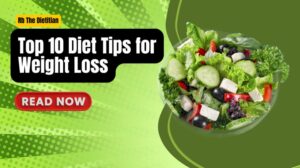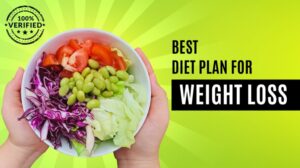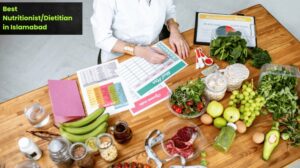1. Start with a Healthy Breakfast
One of the most effective ways to jumpstart your day and promote weight loss is by eating a nutritious breakfast. Skipping breakfast often leads to overeating later in the day or making poor food choices. A balanced breakfast that includes protein, fiber, and healthy fats can help regulate your metabolism and keep hunger at bay until lunchtime.
Importance of a Nutritious Breakfast
Eating breakfast provides your body with the energy it needs to begin the day. Studies have shown that people who eat breakfast tend to have a lower body mass index (BMI) compared to those who skip it. The key is to focus on nutrient-dense foods that provide lasting energy without excess calories.
Examples of Healthy Breakfast Options
- Oatmeal topped with berries and chia seeds
- A veggie omelet with whole-grain toast
- Greek yogurt with nuts and honey
- Smoothies made with spinach, bananas, and protein powder
2. Focus on Whole Foods
Whole foods, such as fruits, vegetables, whole grains, and lean proteins, should form the foundation of your weight loss diet. These foods are packed with essential nutrients and fiber, which help keep you full while supporting your weight loss goals.
Why Whole Foods Promote Weight Loss
Whole foods are less processed, meaning they retain more of their natural nutrients and are lower in added sugars and unhealthy fats. Fiber, found in fruits, vegetables, and whole grains, helps you feel full and satisfied for longer periods, reducing the likelihood of overeating.
Best Whole Foods to Include in Your Diet
- Leafy greens like kale and spinach
- Berries such as blueberries and strawberries
- Quinoa, brown rice, and other whole grains
- Lean proteins like chicken breast, turkey, and tofu
3. Stay Hydrated
Water is essential for weight loss. Drinking enough water throughout the day supports digestion, metabolism, and the elimination of waste products. Staying hydrated also helps prevent unnecessary snacking, as thirst is often mistaken for hunger.
The Role of Water in Metabolism and Digestion
Water helps your body break down food more effectively, allowing for better nutrient absorption. It also aids in the metabolism of stored fat, helping your body burn calories more efficiently.
Tips for Increasing Water Intake
- Carry a reusable water bottle with you
- Set reminders to drink water throughout the day
- Add flavor with lemon slices, cucumber, or mint
4. Control Portion Sizes
Portion control is a crucial factor in weight loss. Even healthy foods can lead to weight gain if eaten in large quantities. Learning to recognize proper portion sizes can help you avoid overeating and manage your calorie intake more effectively.
How Portion Control Aids in Weight Loss
By limiting portion sizes, you naturally reduce your calorie intake without feeling deprived. Eating smaller, more frequent meals can also help regulate blood sugar levels and prevent overeating.
Simple Ways to Measure and Control Portions
- Use smaller plates and bowls
- Measure portions with your hand (e.g., a palm-sized serving of protein, a fist-sized serving of vegetables)
- Avoid eating directly from the package
5. Include Lean Proteins
Lean proteins are essential for building muscle and promoting fat loss. Including adequate protein in your diet helps keep you full, reduces cravings, and supports your body’s metabolism.
Benefits of Lean Protein for Weight Loss
Protein requires more energy to digest compared to fats and carbohydrates, which means your body burns more calories processing it. Additionally, protein helps preserve muscle mass while you lose fat, keeping your metabolism high.
Best Sources of Lean Protein
- Skinless chicken breast
- Fish such as salmon and tuna
- Legumes like lentils and chickpeas
- Low-fat dairy products such as cottage cheese and Greek yogurt
6. Avoid Processed Foods
Processed foods are often high in unhealthy fats, sugars, and sodium, making them a poor choice for weight loss. These foods can lead to overeating, weight gain, and an increased risk of chronic diseases.
How Processed Foods Hinder Weight Loss
Processed foods are designed to be hyper-palatable, which means they can trigger cravings and lead to overeating. They are also typically low in essential nutrients, leaving you feeling unsatisfied and hungry shortly after eating.
Healthier Alternatives to Processed Snacks
Instead of reaching for chips or sugary treats, consider these healthier options:
- Fresh fruit with a handful of nuts
- Air-popped popcorn seasoned with herbs
- Whole-grain crackers with hummus
- Greek yogurt with fresh berries
7. Eat Mindfully
Mindful eating is the practice of being fully present while eating, paying attention to the taste, texture, and aroma of food. It also involves listening to your body’s hunger and fullness cues, which can help prevent overeating.
The Importance of Mindful Eating Habits
By eating mindfully, you become more aware of the reasons behind your eating habits. This can help you avoid emotional eating and make more intentional food choices. Mindful eating also promotes a better relationship with food, helping you enjoy meals without guilt or overeating.
How to Practice Mindful Eating
- Slow down and chew each bite thoroughly
- Eliminate distractions, such as TV or smartphones, while eating
- Take time to savor the flavors and textures of your food
- Stop eating when you feel comfortably full, not stuffed
8. Incorporate Fiber-Rich Foods
Fiber plays a key role in weight loss by helping you feel full longer, reducing the chances of overeating. It also supports healthy digestion and helps regulate blood sugar levels.
How Fiber Promotes Satiety and Weight Loss
High-fiber foods take longer to digest, which helps you stay full for extended periods. This can prevent unnecessary snacking and lower your overall calorie intake. Additionally, fiber helps stabilize blood sugar, which can reduce cravings for sugary foods.
High-Fiber Foods to Include in Your Diet
- Legumes such as beans, lentils, and chickpeas
- Whole grains like oats, quinoa, and barley
- Fruits such as apples, pears, and berries
- Vegetables like broccoli, Brussels sprouts, and carrots
9. Snack Smartly
Snacking can be part of a healthy weight loss plan if done right. The key is to choose nutrient-dense snacks that support your goals and prevent overeating during main meals.
Healthy Snack Options That Aid Weight Loss
- A handful of mixed nuts or seeds
- A small apple with almond butter
- Cottage cheese with cucumber slices
- Sliced veggies with guacamole or hummus
The Timing of Snacks and Its Impact on Weight Management
Snacking at the right times can help maintain energy levels and prevent extreme hunger, which often leads to overeating. Aim to snack between meals when you feel moderately hungry, and avoid late-night snacking, as it can interfere with your sleep and digestion.
10. Get Adequate Sleep
Getting enough sleep is often overlooked, but it plays a critical role in weight loss. Lack of sleep can disrupt hunger-regulating hormones, making you feel hungrier and more prone to overeating.
The Link Between Sleep and Weight Regulation
When you don’t get enough sleep, your body produces more ghrelin, a hormone that increases hunger, and less leptin, the hormone that signals fullness. This imbalance can lead to increased calorie consumption and hinder your weight loss efforts.
Tips for Improving Sleep Quality
- Stick to a consistent sleep schedule, even on weekends
- Create a relaxing bedtime routine, such as reading or meditation
- Avoid caffeine and heavy meals before bedtime
- Ensure your sleeping environment is quiet, dark, and comfortable
Common Pitfalls to Avoid
Weight loss can be challenging, and there are several common pitfalls that can derail your progress. By being aware of these traps, you can make better choices and stay on track.
Skipping Meals
Skipping meals can backfire by making you hungrier later, leading to overeating or choosing unhealthy, high-calorie foods. It’s important to eat regular, balanced meals to keep your metabolism steady.
Emotional Eating
Many people turn to food as a way to cope with stress, boredom, or emotions. Learning to recognize emotional triggers and finding alternative coping mechanisms, such as exercising or journaling, can help prevent emotional eating.
Falling for Fad Diets
Fad diets often promise quick results, but they’re usually unsustainable in the long run. Many of these diets restrict essential nutrients or promote unhealthy habits, which can lead to weight regain once you return to your regular eating habits.
Importance of Exercise with a Balanced Diet
While diet is crucial for weight loss, combining it with regular physical activity can significantly enhance your results. Exercise helps burn calories, build muscle, and improve overall health.
Combining Diet and Exercise for Effective Weight Loss
To lose weight effectively, it’s important to create a calorie deficit by eating fewer calories and burning more through physical activity. Exercise also helps improve your body composition by increasing muscle mass and reducing fat.
Types of Exercises That Complement Weight Loss Efforts
- Cardio: Running, cycling, and swimming help burn calories and improve cardiovascular health.
- Strength training: Lifting weights or doing bodyweight exercises helps build muscle and boost metabolism.
- Flexibility exercises: Yoga and Pilates improve flexibility, reduce stress, and support recovery.
Setting Realistic Weight Loss Goals
Setting realistic and achievable weight loss goals is essential for long-term success. Instead of aiming for rapid weight loss, focus on gradual and sustainable changes that you can maintain over time.
How to Set Achievable and Healthy Weight Loss Goals
Start by setting small, specific goals that are attainable, such as losing 1-2 pounds per week. Break down your overall goal into smaller milestones, and celebrate each accomplishment along the way.
Tracking Progress
Keep track of your weight loss journey by measuring your progress regularly. Use tools like a food journal, fitness app, or progress photos to stay motivated and make adjustments as needed.
FAQs about Diet Tips for Weight Loss
- What is the best diet for weight loss?
- The best diet is one that focuses on whole foods, controls portion sizes, and includes a balance of proteins, fats, and carbohydrates.
- How many calories should I eat to lose weight?
- It depends on your current weight, activity level, and goals. Typically, reducing your daily intake by 500-1000 calories will result in a safe weight loss of 1-2 pounds per week.
- Can I lose weight without exercise?
- Yes, weight loss is primarily driven by a calorie deficit, but exercise can enhance results and improve overall health.
- Are carbs bad for weight loss?
- Not all carbs are bad. Focus on complex carbohydrates like whole grains and avoid refined carbs like white bread and pastries.
- How long does it take to see results?
- Most people start noticing changes within a few weeks if they consistently follow a healthy diet and exercise plan.
- Can intermittent fasting help with weight loss?
- Yes, intermittent fasting can help control calorie intake and improve metabolism, but it may not work for everyone.
Conclusion
Achieving sustainable weight loss requires a combination of healthy eating habits, regular physical activity, and lifestyle changes. By following these top 10 diet tips for weight loss, you can set yourself up for long-term success and enjoy the benefits of a healthier body and mind.






